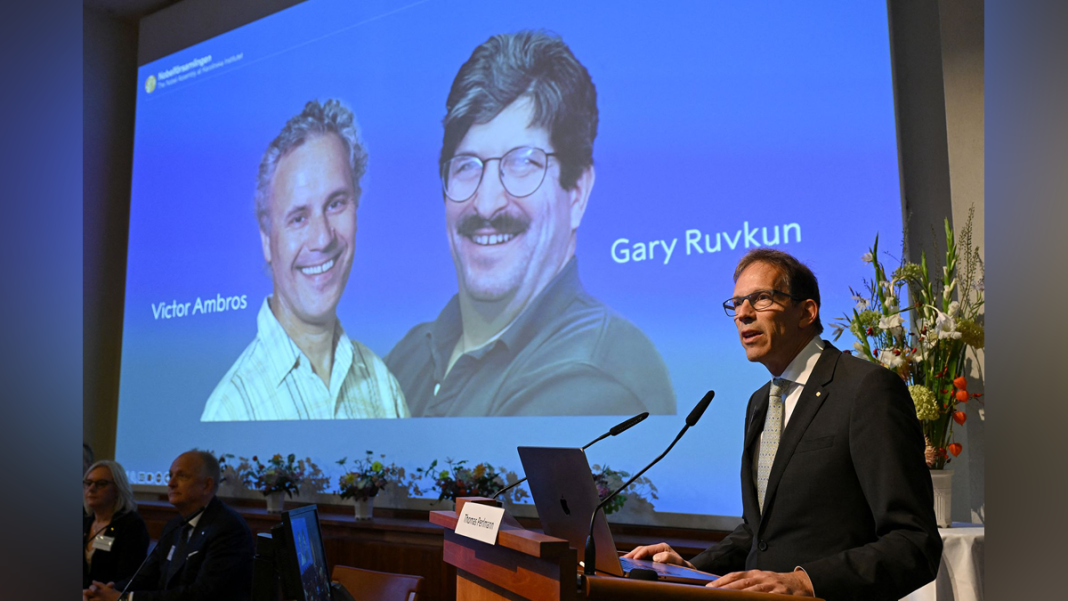This year’s Nobel Prize in Physiology or Medicine has been awarded to Victor Ambros and Gary Ruvkun for their pioneering discovery of microRNA, a critical regulator of gene activity. This recognition not only underscores the significance of their research but also highlights an exciting frontier in our understanding of genetics and its implications for human health.
At the core of their groundbreaking work is the concept of gene regulation, which explains how identical genetic information can lead to the diverse array of cell types found in the human body. “The information stored within our chromosomes can be likened to an instruction manual for all cells,” the Nobel Prize committee noted, emphasizing that every cell contains the same genetic blueprint. Yet, muscle cells, nerve cells, and other specialized cells exhibit vastly different characteristics. This is where microRNA comes into play.
MicroRNAs are small molecules that act like conductors of a symphony, guiding cells on which genes to activate and which to silence. The discovery of these molecules, first identified in 1993 by Ambros in the tiny roundworm C. elegans, was initially met with skepticism. For many years, microRNAs were considered an oddity, seemingly irrelevant to more complex organisms. However, when Ruvkun published findings showing that microRNAs are present across the animal kingdom, it ignited a rapidly growing field of study. “Then the field exploded,” said Olle Kämpe, a professor at the Karolinska Institutet and vice chair of the Nobel medicine committee. Today, scientists have identified tens of thousands of microRNAs in various organisms, illuminating their vital role in gene expression and cellular function.
The implications of this research extend far beyond academic interest. Abnormalities in gene regulation due to malfunctioning microRNAs are linked to numerous health issues, including cancer, hearing loss, and skeletal disorders. David Pendlebury, head of research analysis at Clarivate’s Institute for Scientific Information, points out the potential of microRNAs as diagnostic and therapeutic tools. “They offer opportunities in treating cancer and other diseases. Clinical trials are underway to utilize microRNA profiling for patient prognosis and clinical response,” he states. This emerging field promises to revolutionize how we approach treatment and patient care.
Ambros and Ruvkun’s contributions are not just limited to their initial discoveries; they have laid the groundwork for ongoing research in the field. Their work has opened new avenues for understanding the complexities of genetic regulation, especially in the context of developing therapies for diseases that currently lack effective treatments.
The Nobel Prize, which carries a monetary award of 11 million Swedish kronor (approximately $1 million), serves as a testament to the profound impact of Ambros and Ruvkun’s research on the scientific community and society at large. As we continue to unravel the mysteries of gene regulation and microRNA, the potential for advancements in medicine and biotechnology is boundless.
In a world that increasingly relies on genetic understanding for health solutions, the recognition of Ambros and Ruvkun’s work serves as a reminder of the importance of foundational research. Their discovery not only elucidates a fundamental aspect of biology but also offers a beacon of hope for future innovations in treating some of humanity’s most challenging diseases. As we look ahead, it is clear that the journey into the intricacies of gene regulation is just beginning, and the possibilities are as vast as the human genome itself.

